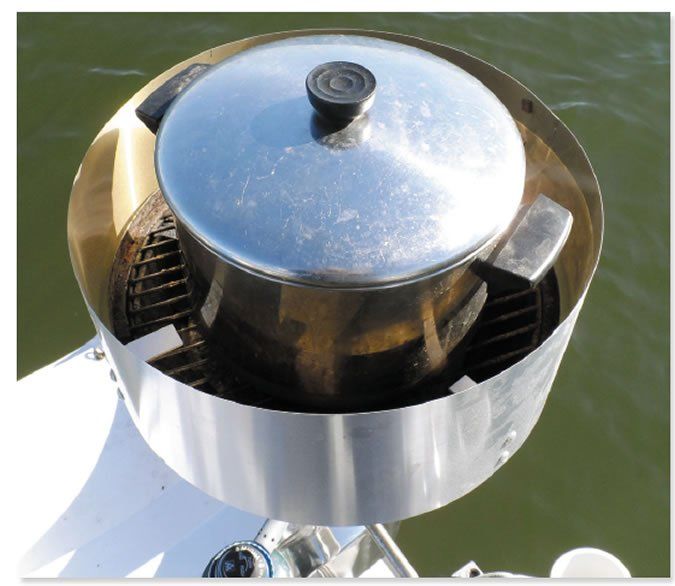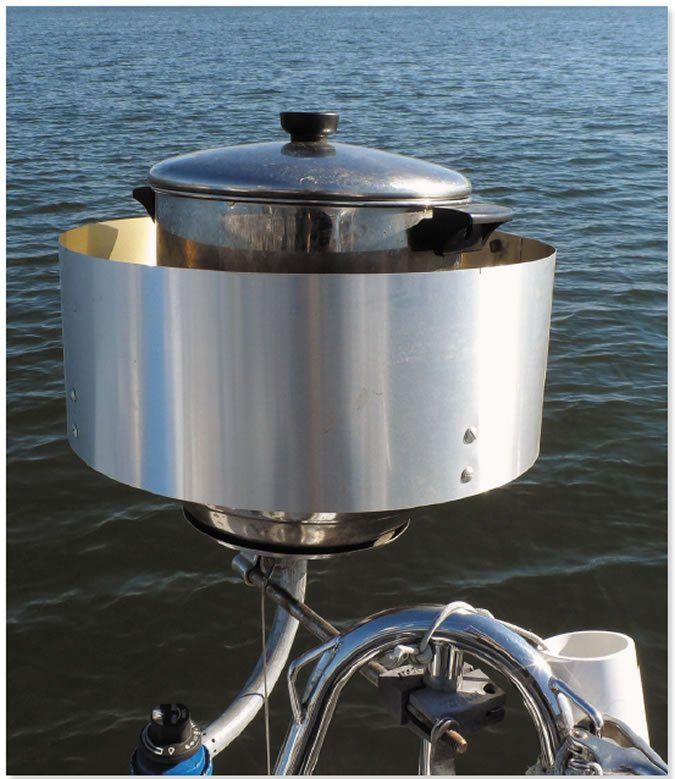


The writers and editors at Practical Sailor are perpetual tinkerers-always looking for creative, do-it-yourself solutions to even the smallest onboard problems. We figure our readers likely suffer the same challenges on their boats, so were obliged to share such projects.
Recently, one writer-inspired by his appetite for fresh blue crabs and his daughters penchant for catching them on summer cruises-set out to find a way to make steaming them onboard an easier task. The problem was that when cooking them in the galley, the heat was oppressive in the summer and the smells would fill the cabin and drive his guests on deck. Steaming them on the outdoor grill seemed like the obvious solution, but if there was any significant breeze, the heat would simply blow away since the grills cover had to be removed to make room for a large steaming pot. Instead of boiling the few cups of water in a minute or two, it would take 20 minutes, if at all, and then it would merely simmer. Boiling a full pot on the grill for corn or stew was out of the question.
His solution was to design and build a wind break, or more specifically, a pot skirt. The pot skirt was fabricated from aluminum roof flashing (thin stainless would be even better, if you have it); seven #8 by half-inch machine screws with nuts; and four 4-inch lengths of half-inch by 1/8-inch aluminum strips bent into angle brackets (zinc-plated brackets are available in any hardware store). The barrier breaks the wind and guides the rising heat along the sides of the pot, reducing cooking times on the grill by 33 percent or more.
This is also a good grilling accessory for those sailing remote areas who need to stretch the propane supply as far as possible or those looking for a little more oomph from their alcohol stove.
The same trick also works in the galley. A stove-top skirt can be as little as 3 inches high, ending below the pots handle. The angle brackets are not needed, but allow the bolts to extend in about a half-inch to provide a uniform air gap around the pot.
Weve tested this on a variety of pots and burners, heating a known volume of water from 65 degrees to 165 degrees, while stirring gently. The larger the burner and the smaller the pot, the greater the improvement, but in all cases, we observed a 15- to 25-percent reduction in boiling time.



































